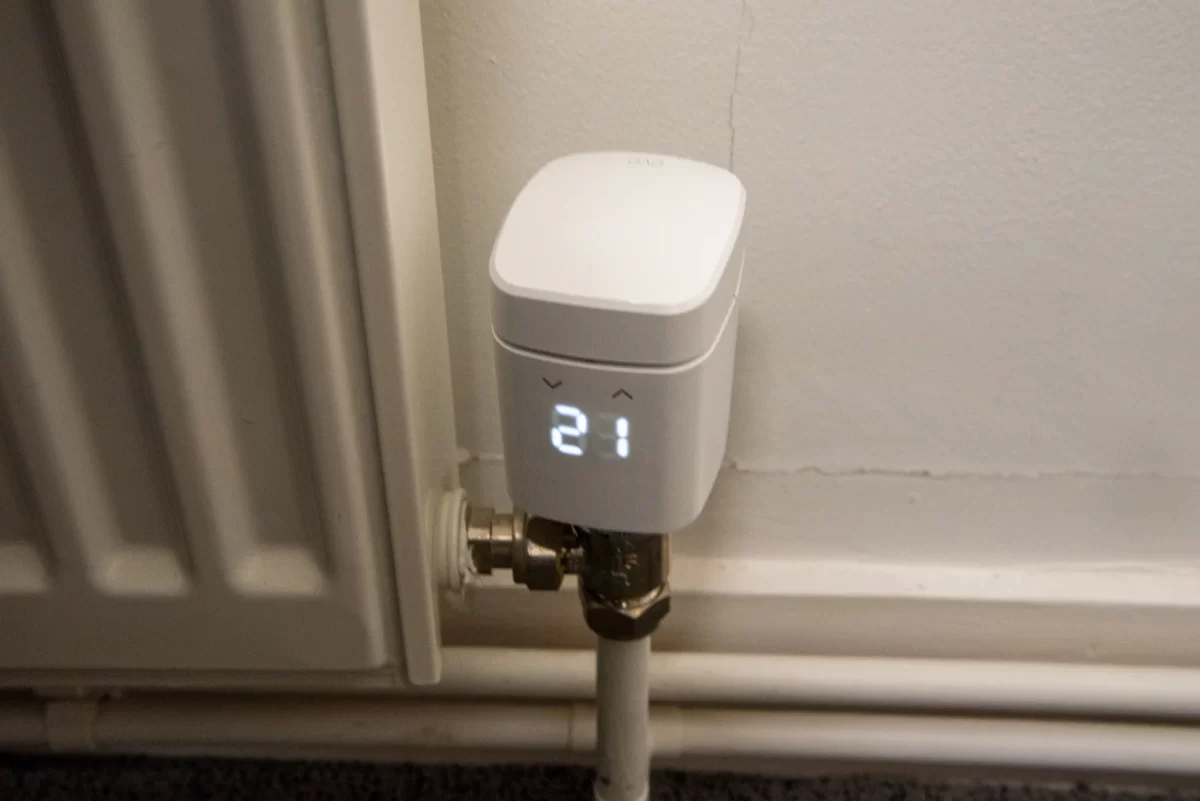The outdoor heater sensor is an electronic device that constantly adapts the water temperature in the heater to variations in the outdoor temperature.
In this way, to guarantee the set temperature (temperature set by the occupants of the room), whatever the climatic variations, the heat generator is always ready to respond without delay or overconsumption of energy to the predetermined heating curve and the requests of the room control.
Outdoor heater sensor: control modes
4 possible control modes
In the case of a hot water heating system controlled by regulation, 4 prominent cases are possible:
– the heater burner is switched on at the request of the room thermostat;
– the heater is kept at a constant temperature (80 or 90 °C);
– the room thermostat modulates the temperature of the heater;
– an outdoor sensor regulates the temperature of the heater.
heater outdoor sensor: optimized reaction at the right time
This operating mode changes everything! The sensors continuously measure the variations in outdoor temperature. These data are transmitted to the heater, allowing it to anticipate heating needs before the room cools or heats up.
Therefore, the heater adapts its temperature to the nearest degree, even before the room thermostat detects the variation. This device works both upwards and downwards to optimize the house’s temperature constantly and progressively.
The instantaneous consequences are measured in minimal loss of calories through the pipes or the heater and in notable comfort for the occupants.
Note: This system is particularly efficient when associated with a condensing heater coupled with underfloor heating or low-temperature emitters. In this context, the return water of the circuit is always below the dew point, which is the optimal condition for the condensing heater. The gain in efficiency is also positive in traditional emitters (radiators or convectors) since the high temperatures of the heat transfer fluid are only used a few days per heating season.
Outdoor heater sensor: the must in terms of heating control

Numerous advantages
Heater control using an outdoor sensor, combined with an intelligent programmable room control system, represents the highest degree of room temperature control in residential premises today.
It is the system to adapt to optimize the responses of a water curve control (also called “water law” or “water law”). Whether learned or barbaric, these names hide a simple principle: to establish, for each degree of outside temperature, the temperature of the heat transfer fluid capable of maintaining a given inside temperature.
The advantages are numerous:
– Lower bills between 15 and 25% by:
◦ precise and constant adequacy between the needs and the supply of calories (neither too much nor too little);
◦ perfect control of energy consumption;
◦ optimization of the heater’s efficiency;
◦ reduction of the heater’s on/off cycles.
– Improved heating comfort by:
◦ progressiveness and smoothness of heating;
◦ permanent temperature stability;
◦ smoothing of sudden climatic variations;
◦ reduction of parasitic noises;
◦ reduction of polluting emissions.
– Compatibility with the most sophisticated control systems and programmers.
– Perfect adaptation to complex installations and home automation applications.
– Thermal management of homes with large areas or on several levels.
Only one drawback, but unavoidable
The outdoor sensor requires a rigorous calculation of the installation parameters and a precise adaptation of the response curve to be fully effective. These adjustment procedures are the domain of a specialized and documented professional.
Each installation induces a specific heating curve, which cannot be extrapolated to another site.
Outdoor heater sensor: its location is essential
The heater’s outdoor sensor must be fixed:
– on a north-facing exterior wall (to avoid exposure to direct sunlight);
– at the height of about 2 meters;
– away from the influence of a shelter or heat source.
However, the low-angled radiation of the winter sun allows the probe to be mounted on walls facing east or west. It is then essential to equip the installation with an indoor ambient satellite (remote control, not to be confused with an ambient thermostat), to correct the effect of the heating of the outdoor sensor. This additional device can also be used to modify the heating curve to correct the influence of the free calories received by the room (sunshine, occupancy density, fireplace, household appliances, etc.).
Note: this does not authorize direct southern exposure, which should be avoided in all cases.
Price of the outdoor heater sensor
Whether wired or wireless, the outdoor sensor does not constitute a significant investment. However, consider the intervention of the heating engineer or the specialized electrician. His service can multiply the initial investment by 2 or 3 but should be primarily amortized by the effects of an appropriate adjustment on energy consumption and the comfort bonus.
Prices vary greatly depending on the model, brand and distributor. For example:
– wired probe: between $20 and $70 (supply only);
– radio sensor: between $90 and $180 (supply only);
– adjustment and installation: $150 to $400 extra.

